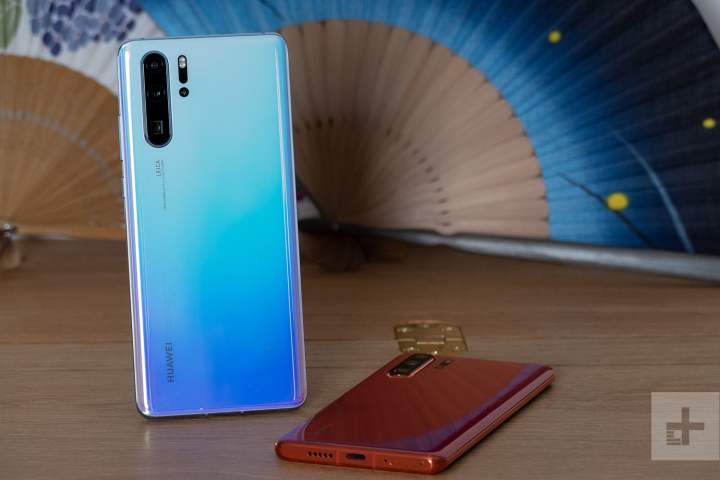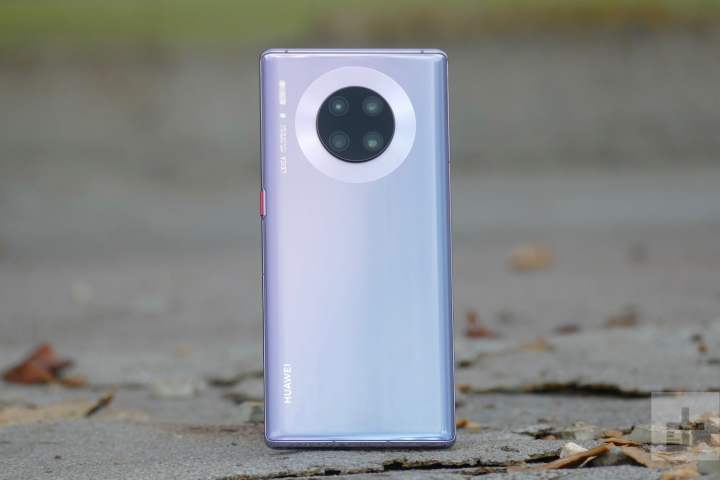While Huawei as a brand may be embroiled in geopolitical turmoil, its phones continue to give Samsung and Apple a run for their money. In this guide, we highlight the best Huawei has to offer on the market right now to help you decide if any of its devices are the right fit for you.
Keep in mind that the situation between the United States and Huawei is in flux, and while some models ship with Android preinstalled, some don’t support Google services due to Huawei’s status as a banned trade entity in the U.S.
Best Huawei smartphones at a glance
- Best Huawei flagship: Huawei P40 Pro
- Best Huawei value offering: Huawei P40 Lite
- Best older Huawei model: Huawei P30 Pro
- Most anticipated Huawei model: Huawei Mate 40
Best Huawei flagship
The best Huawei flagship: Huawei P40 Pro

The Huawei P40 Pro takes last year’s Huawei P30 Pro and kicks it up a notch — figuratively and literally. The 2020 flagship now houses a dual-camera setup on the front, turning the single punch-hole of last year into a pill-shaped notch. If you thought the Huawei P30 Pro of 2019 couldn’t get better, the Chinese tech giant has implemented a 90Hz refresh rate display, faster reverse wireless charging, and in P-series fashion, a new setup of class-leading cameras. The upgraded array of lenses include a 50-megapixel main lens, a 12-megapixel telephoto, and a 40-megapixel ultrawide.
While the device lacks Google Play Services, Huawei’s in-house app store and Android’s capability of side-loading apps make the Huawei P40 Pro still a compelling smartphone to buy in 2020. Priced at around $1,100, the flagship matches many of its competitors while offering top-of-the-line specifications that will leave any consumer satisfied.
Read our Huawei P40 hands-on review
Best Huawei value offering
Huawei P40 Lite

Also known as the Huawei Nova 6 SE in some markets, the Huawei P40 Lite is the best value smartphone that the company has to offer at the moment. While it omits some premium features like an IP certification and a glass design, the device has some standout points of its own. The P40 Lite is powered by Huawei’s Kirin 810 chipset and 6GB of RAM and is running the latest version of EMUI 10.
The device is sold for around $250, but boasts specs that compete with 2020 flagships. The gorgeous gradient back cover houses a 4,200 mAh battery — capable of lasting you a whole day. Once drained, top it up with Huawei’s 40W SuperCharge technology. The quad-camera setup gives you the flexibility to take stunning shots anywhere, and any time. Did we also mention it has a headphone jack?
Best older Huawei model
Huawei P30 Pro

The Huawei P30 Pro is a year old but still a powerhouse of a smartphone. Featuring one of the best cameras in the field and a lustrous design that comes in several brightly colored variants. The P30 Pro packs a two-day battery life among its fantastic internal hardware. The 6.47-inch OLED screen offers beautiful contrast and images with a crisp pixels-per-inch density of 398.
If you’re looking to join the Huawei family, the P30 Pro is a top-notch option. You can find it unlocked and ready to go from Amazon for about $700. With its triple-lens main camera capturing images up to 40 megapixels and great night shots, its colorful design, and wireless charging, the P30 Pro is still one of the strongest Huawei offerings on the market today. Updates will mean it’ll share its newer brother’s lack of the Google Play Store, though.
Read our full Huawei P30 Pro review
The most-anticipated Huawei smartphone
Huawei Mate 40

Fall season is coming, which means a new Huawei Mate-series flagship is on its way. Following the success of the Huawei Mate 30, the expected Huawei Mate 40 will carry the company’s best-of-the-best hardware both in the screen and camera departments. If there’s anything we’ve learned in 2020, it’s that higher refresh rates are a must if you want any mention with the best display smartphones. Huawei’s long-time partnership with Leica may also lead to their first 8K video-recording setup. While none of this is certain, we’ll keep you up to date the moment we get our hands-on with the premiere smartphone.



